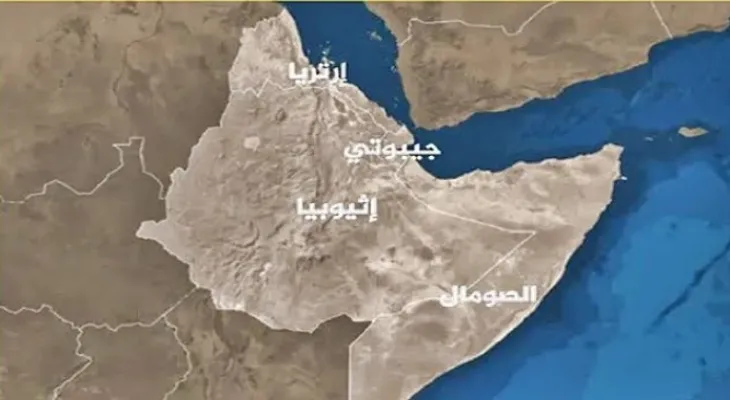Search here
Newspaper
Search here

Arab Canada News
News

Published: January 23, 2024
Ethiopia announced, at the beginning of this year, the signing of a memorandum of understanding with the separatist "Somaliland" region that grants Addis Ababa the right to use a 20-kilometer-long coastline from Somali territory for 50 years, a matter condemned by the Somali government, stressing that it will confront this agreement by all legal means, considering it an aggression and a blatant violation of its sovereignty.
For his part, President Abdel Fattah el-Sisi expressed his rejection of the agreement signed between Somaliland and Ethiopia, confirming Egypt's refusal to intervene in Somalia's affairs or infringe upon its territorial integrity.
The president said during a joint press conference with his Somali counterpart Hassan Sheikh Mahmoud, in Cairo: "Regarding the agreement between Somaliland and Ethiopia, we talked about the fact that in Egypt we had a clear position that was recorded and a statement was issued by the Egyptian Ministry of Foreign Affairs rejecting this agreement, and therefore we reiterate Egypt's rejection of interference in Somalia's affairs or infringing upon its territorial integrity."
But, how did Ethiopia become the largest landlocked country in the world?
Ethiopia used to be a naval power with its ports Massawa and Assab, but it lost these two ports and all its coastline after Eritrea separated from it in 1993 to become an independent state, according to the British "BBC" network.
Thus, Ethiopia, located in East Africa, became the largest landlocked country in the world by population, exceeding 120 million people, after Eritrea gained independence in 1991 and officially separated in 1993, following a war between them caused by a dispute over the ownership of the Badme and Zalambesa regions.
Accordingly, Addis Ababa lost access to the Red Sea after economic disputes, as Eritrea accused it of exploiting its use of the Eritrean ports of Assab and Massawa, attracting international investments solely to itself, and hindering its institutions from developing its economy.
The conflict between the two countries during the last century deprived Ethiopia of using both outlets on the Red Sea, located at distances of 1177 km and 894 km from Addis Ababa respectively, which had represented part of the geopolitical geography of the Ethiopian Empire for many centuries, according to what "The Independent" reported.
Ethiopia, rich in rivers, has become completely landlocked with no maritime borders after losing its Red Sea access, as Ethiopia dismantled its navy in 1991 following Eritrea's secession, which was part of it at that time and located on the Red Sea, after a thirty-year war for independence.
Today, Ethiopia is the largest country in the world by population without a coastline, which poses many difficulties for its growth, as 95 percent of Ethiopian trade transactions depend on its neighbor Djibouti, which owns 31 km of coastline.
Therefore, Ethiopian Prime Minister Abiy Ahmed insists on obtaining a seaport and access to the Red Sea to free his 120 million citizens from their "geographical prison," according to BBC.
Ethiopia, which has a population of 127 million people, the second largest in Africa after Nigeria, is still working to diversify its maritime outlets in order not to be hostage to any party in the vitality of its economy, which totaled 126.78 billion dollars in 2022.
Comments